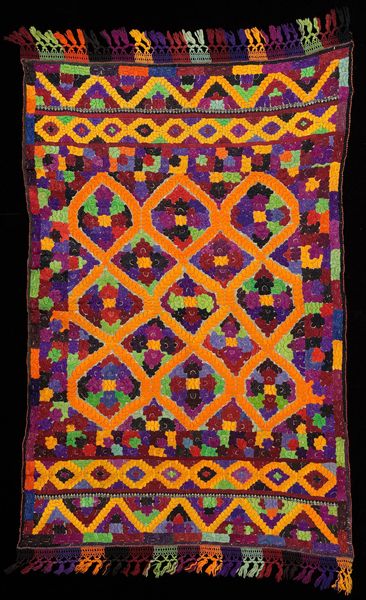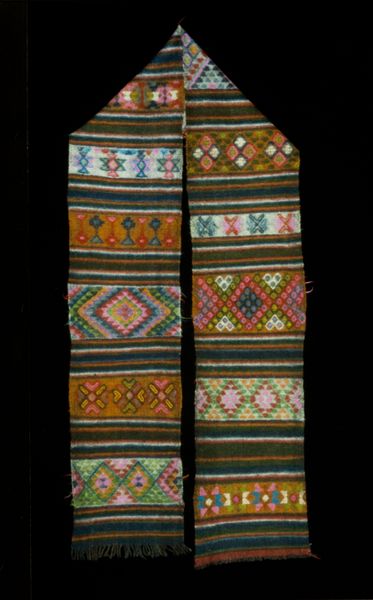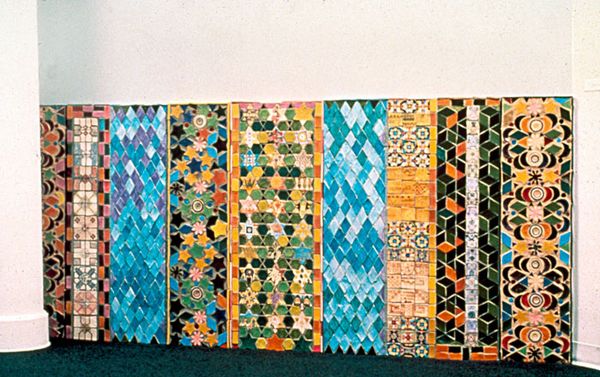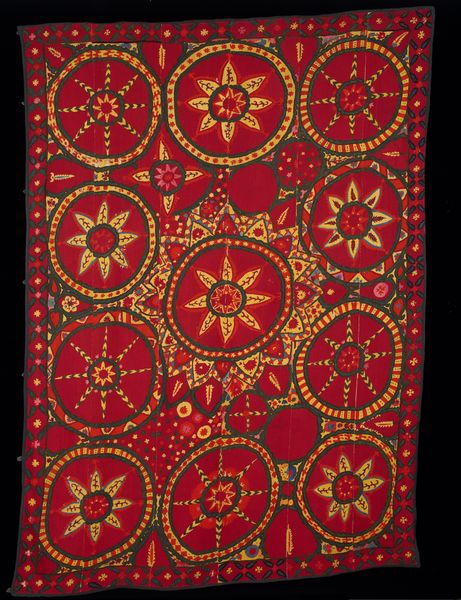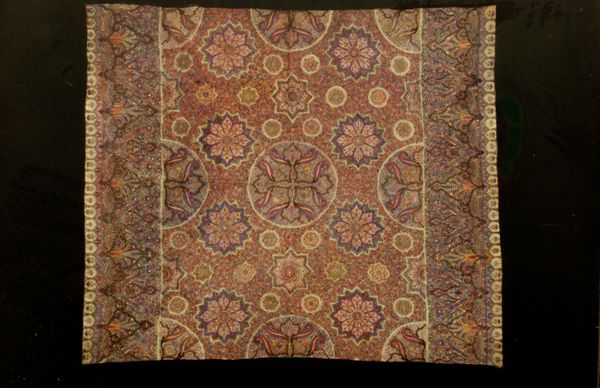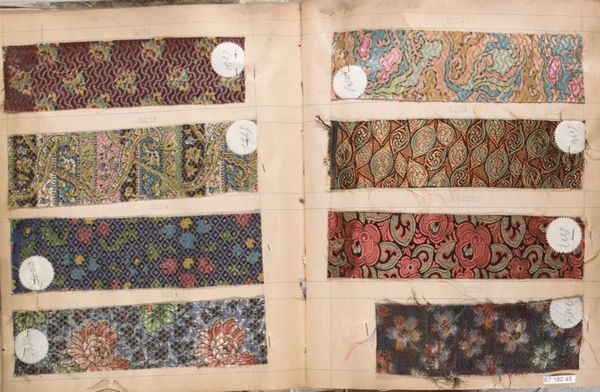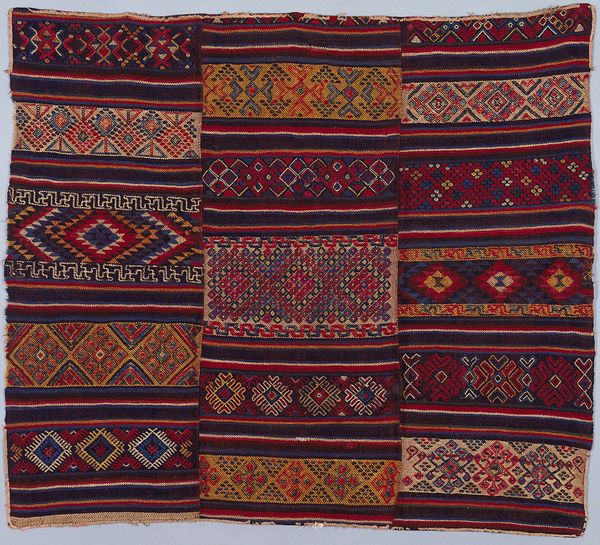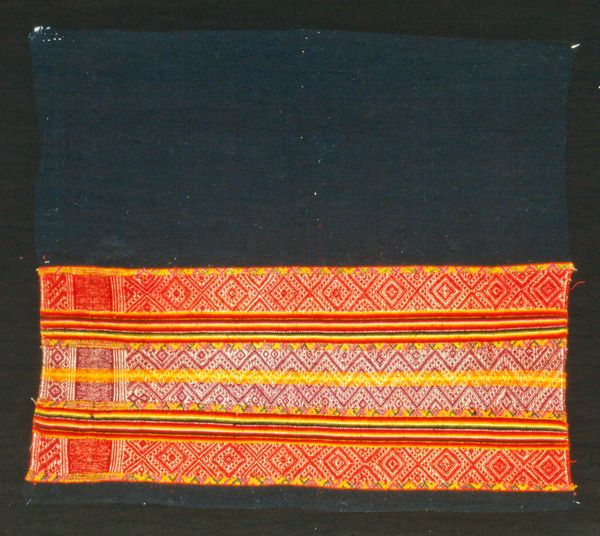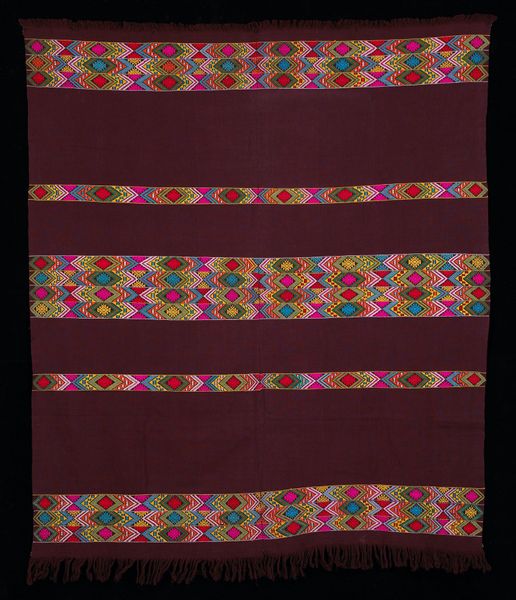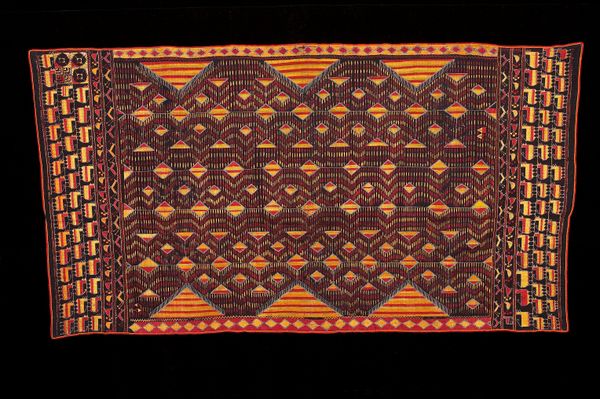
silk, weaving, textile
#
silk
#
asian-art
#
weaving
#
textile
#
decorative-art
Dimensions: 106 3/4 x 19 in. (271.15 x 48.26 cm)
Copyright: Public Domain
Editor: This exquisite belt, a textile made of silk, likely dates to the 19th or early 20th century and is housed at the Minneapolis Institute of Art. The sheer variety of patterns and textures is mesmerizing; each tier seems to tell a different story. What do you see in this piece that speaks to its time and place? Curator: Well, as a historian, I immediately consider the socio-cultural context that shaped such an object. These elaborate textiles weren't simply decorative; they communicated status and identity. The careful crafting and precious materials tell us about trade networks and access to luxury goods. Editor: So, the belt acts as a kind of document, reflecting social structures? Curator: Precisely. Consider the 'pattern and decoration' aspect; this art movement challenges the established hierarchy of fine arts versus decorative arts. This belt disrupts such notions through the emphasis of intricate design. Do you think an artist today might be able to create such a thing? Editor: That's a tough question. Someone could certainly replicate the techniques. But without that historical context of the item being a display of status or challenging the art hierarchy, wouldn’t it be a fundamentally different piece? Curator: An excellent point. The historical embeddedness gives it that important meaning. The museum contextualizes and thus influences its reception, and the art market further shapes its value. Editor: This makes me see how interconnected everything is—the creation, the culture, the market, and the museum itself! Curator: Exactly. It highlights the dynamic role of art in reflecting and shaping society. It also speaks to cultural exchange and the transmission of artisanal knowledge across generations.
Comments
minneapolisinstituteofart almost 2 years ago
⋮
Weaving technology used by urban Arab weavers was very sophisticated. A belt such as this, with its complicated and diverse patterning would probably have involved at least five specialists: a dyer to create the four warp colors, three coordinated weavers (one handling the weft thread and ground structure, and two developing the pattern), and a passementerie craftsperson to finish the braided warp ends and tassels. Fine wool weaving was made throughout North Africa and generally this production was used regionally, but urban Arab silk weavers frequently produced specialized textiles for a variety of communities in quite diverse locations.
Join the conversation
Join millions of artists and users on Artera today and experience the ultimate creative platform.

